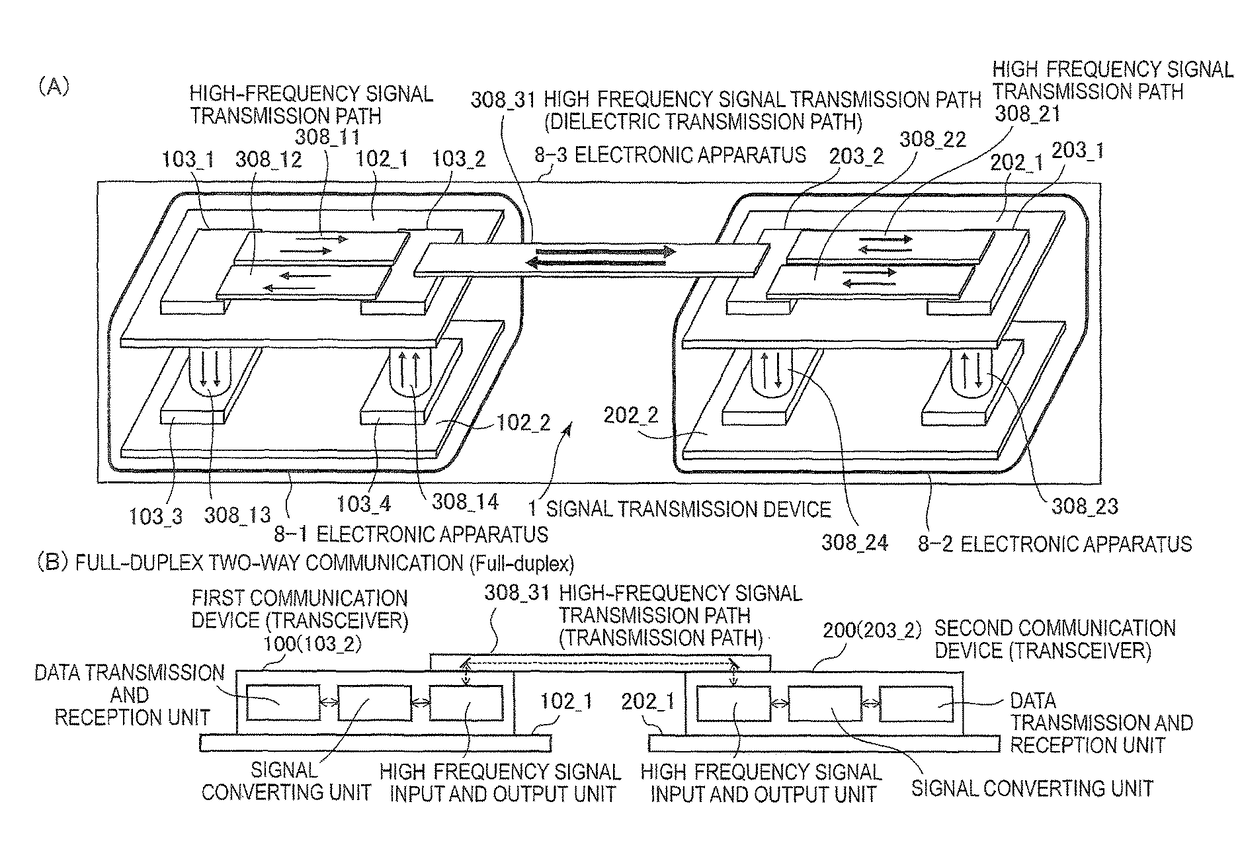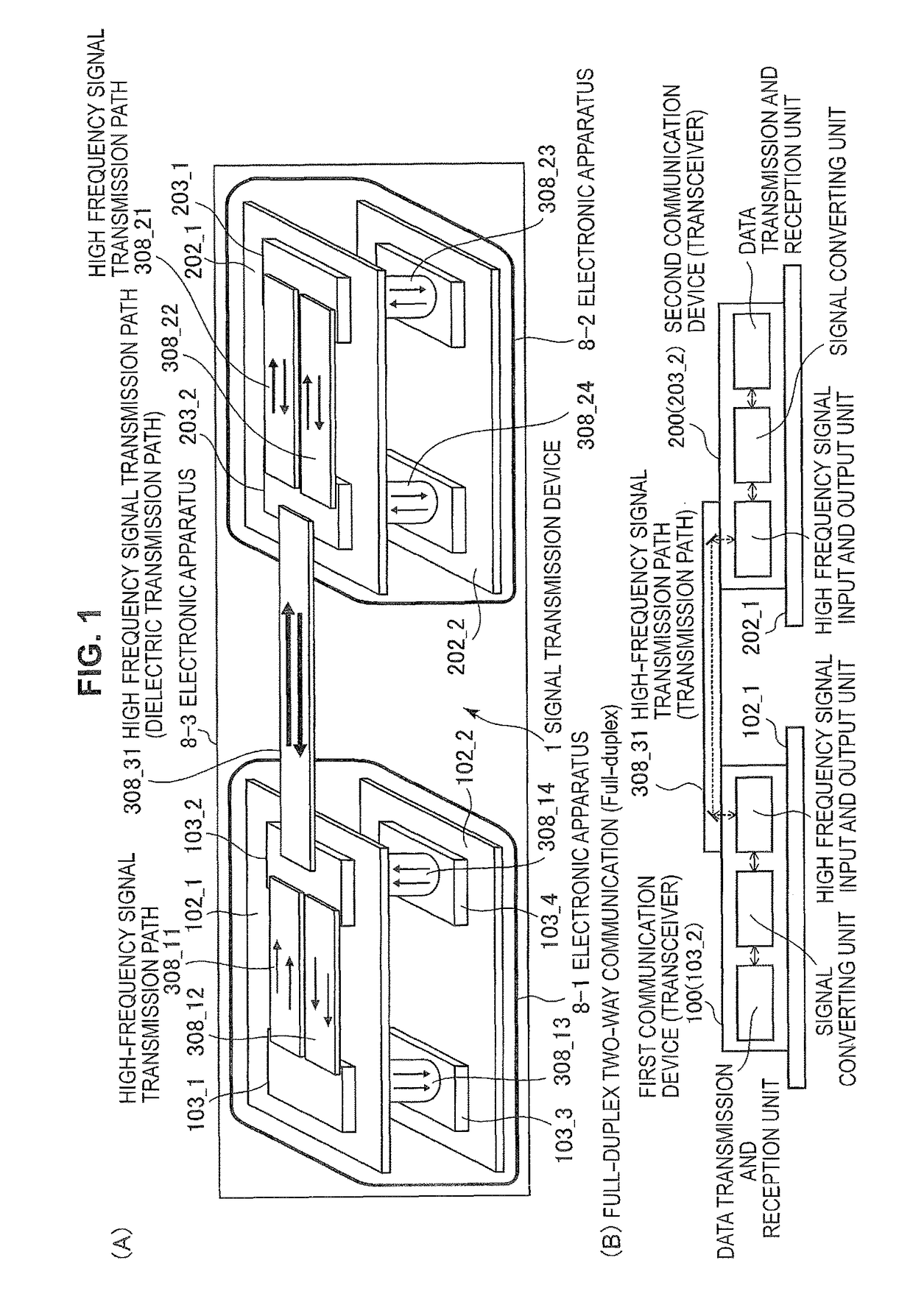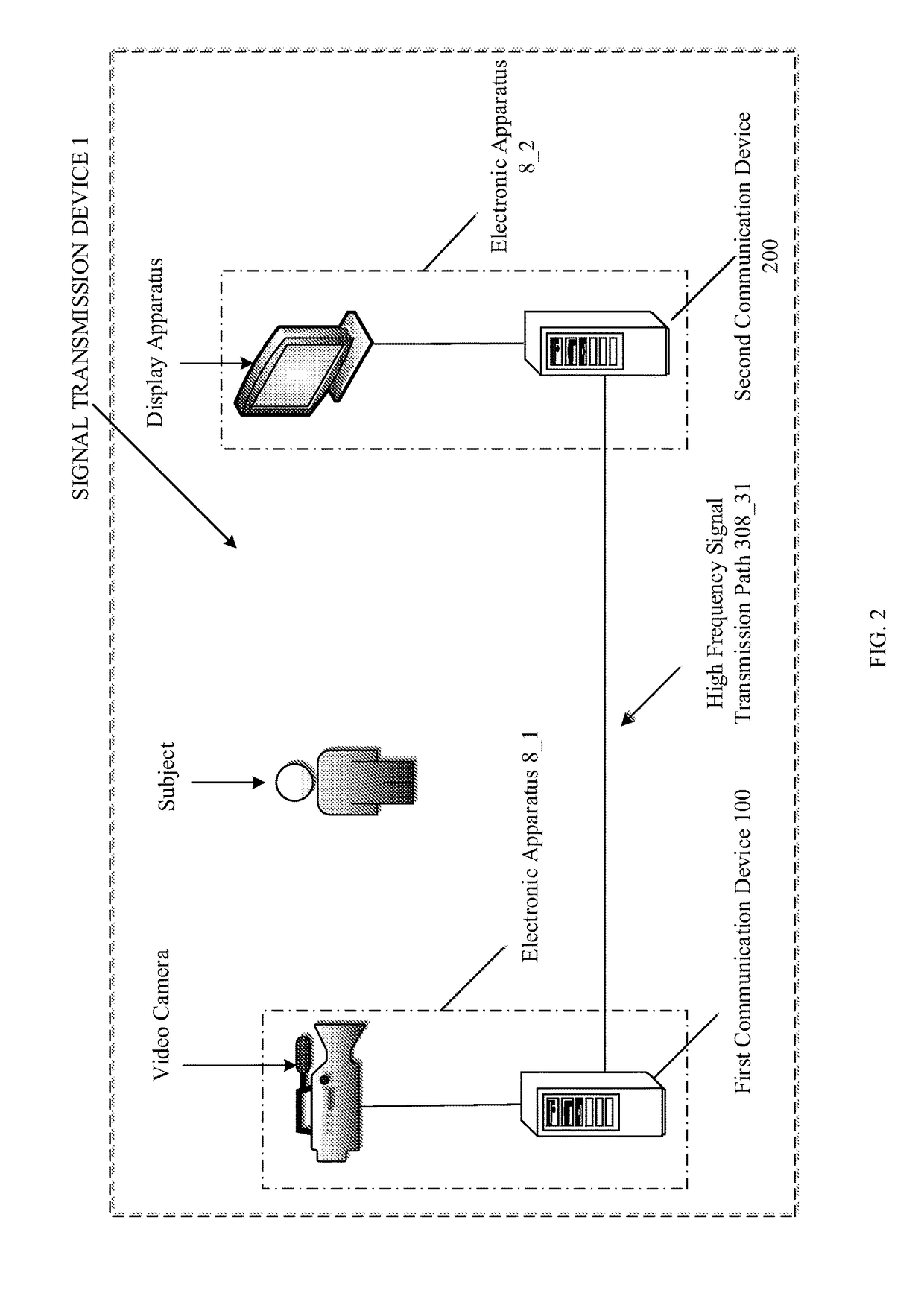Signal transmission device, receiving circuit, and electronic apparatus
a technology of signal transmission device and receiving circuit, which is applied in the direction of duplex signal operation, baseband system details, fixed station waveguide transmission system, etc., can solve the problems of increasing power consumption, increasing signal distortion effect, and increasing unnecessary radiation, so as to reduce interference problems
- Summary
- Abstract
- Description
- Claims
- Application Information
AI Technical Summary
Benefits of technology
Problems solved by technology
Method used
Image
Examples
embodiment 1
[Details of Millimeter-Wave Band Signal Transmission Function]
[0169]Embodiment 1 is an application example of a mutual interference countermeasure in a configuration corresponding to the full-duplex two-way communication. FIG. 11 is a diagram illustrating transmission and reception systems according to Embodiment 1, and is a functional block diagram of Embodiment 1, focusing on a signal transmission function from a modulation function unit to a demodulation function unit through the high frequency signal waveguide 308 (the signal transmission path 9). FIG. 11 illustrates a configuration corresponding to full-duplex two-way communication of a low frequency side (for example, a 57 GHz band and 12.5 gigabits per second (Gb / s)) and a high frequency side (for example, an 80 GHz band and 12.5 Gb / s).
[0170]In a signal transmission device 1(A) according to Embodiment 1, the first communication device 100 uses a carrier frequency of the high frequency side (80 GHz band) in a transmission proc...
embodiment 2
[Details of Millimeter-Wave Signal Transmission Function]
[0185]FIG. 13 is a diagram illustrating transmission and reception systems according to Embodiment 2 and is a functional block diagram according to Embodiment 2, focusing on a signal transmission function from a modulation function unit to a demodulation function unit through the high frequency signal waveguide 308 (the signal transmission path 9). FIG. 13 illustrates a configuration corresponding to the simplex two-way communication of a low frequency side (for example, a 57 GHz band and 12.5 Gb / s) and a high frequency side (for example, an 80 GHz band and 12.5 Gb / s). In addition, it is preferable to configure the transmission processing unit (a circuit composed of two amplifiers 4, and a peripheral circuit thereof) or the reception processing unit (a circuit composed of two low-noise amplifiers 400, and a peripheral circuit thereof) as a single chip.
[0186]Embodiment 2 is an application example of a mutual interference counte...
embodiment 3
[0195]Embodiment 3 is an application example of a mutual interference countermeasure in a configuration when the full-duplex two-way communication and the simplex two-way communication are combined. Here, the most fundamental example including three channels will be described. Unlike Embodiment 4 to be described below, in the simplex two-way communication, it is assumed that a mutual interference countermeasure (that is, the method according to Embodiment 2) is unnecessary between transmission-sides and between reception-sides. That is, Embodiment 1 is applied when the full-duplex two-way communication is applied in a combination of two channels which are adjacent to each other. A leakage path of a simplex two-way communication system is not considered.
[0196]Hereinafter, in a relation of three channels, “Low” indicates a low frequency channel (57 GHz band). “Mid” indicates a mid frequency channel (80 GHz band). “High” indicates a high frequency channel (103 GHz band). When a desired...
PUM
 Login to View More
Login to View More Abstract
Description
Claims
Application Information
 Login to View More
Login to View More - R&D
- Intellectual Property
- Life Sciences
- Materials
- Tech Scout
- Unparalleled Data Quality
- Higher Quality Content
- 60% Fewer Hallucinations
Browse by: Latest US Patents, China's latest patents, Technical Efficacy Thesaurus, Application Domain, Technology Topic, Popular Technical Reports.
© 2025 PatSnap. All rights reserved.Legal|Privacy policy|Modern Slavery Act Transparency Statement|Sitemap|About US| Contact US: help@patsnap.com



